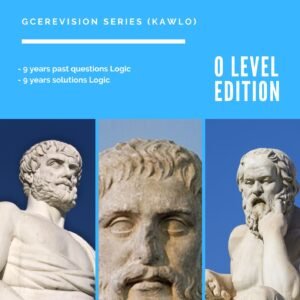cameroon gce intermediate level 2025 product mastery 1
cameroon gce intermediate level 2025 product mastery 1
- Firms that practice the marketing philosophy lay more emphasis onA. Production
B. Customer Satisfaction
C. Selling
D. Distribution
- The period in the evolution of marketing when producers sold their surplus outputs to local middlemen is calledA. Simple Trade Era
B. Sales Era
C. Production Era
D. Marketing Era
- Directing a company’s marketing efforts towards a particular market segment is calledA. Marketing
B. Positioning
C. Targeting
D. Selling
- When in the history of marketing did the production period end?A. In the late 1800s
B. In the early 1900s
C. In the 1920s
D. In the late 1945s
- The place a company’s product occupies in the minds of consumers is referred to as theA. Target
B. Segment
C. Place
D. Position
- The classification of goods into different groups in different markets is known asA. Market segmentation
B. Market differentiation
C. Market activity
D. Market Targeting
- An element of the additional 3P’s of the marketing mix that focuses on facilitating the way services are delivered to customers isA. Place
B. Process management
C. Physical evidence
D. People
- A set of actual and potential buyers of a product sharing the same needs are known asA. Market place
B. Market
C. People
D. Group
- A group of customers who by their faith will never consume pork can be referred to asA. Actual consumers
B. Non-Relative consumers
C. Non-Absolute non-consumers
D. Potential consumers
- The willingness and ability to buy a given quantity of goods at a given price and time is known asA. Supply
B. Demand
C. Purchase
D. Sales
- If the total sales of the industry is 40,000units, and the sales of CHOCOCAM is 30,000 units. What will be market share of CHOCOCAMA. 25%
B. 20%
C. 10%
D. 75%
- An element through which a market can be considered to have evolve in the demographic domain isA. Culture
B. Gender
C. Purchasing power
D. Social status
- A product in marketing impliesA. Everything the customer receives in an exchange.1
B. The physical object the customer receives in an exchange.2
C. The service that is rendered to a customer.3
D. The idea that the customer receives in an exchang4e.














